History
History of the Nuclear Reactor Program
Starting in 1950 with the design and construction of the R-1 reactor, there have been a total of four nuclear reactors at NC State University located on three different sites. The R-1 was the first nuclear research reactor to be designed, built, and operated by an academic institution anywhere in the world. See the brief history of the Nuclear Engineering department written by Raymond L. Murray, Professor Emeritus.
R-1 Reactor:
R-1 Reactor specifications, schematic
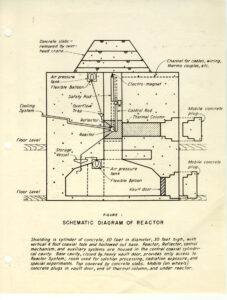 ,
,
& cutaway view.
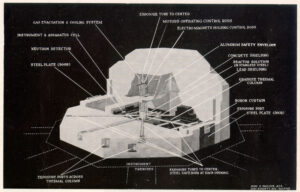
June 5, 1950: Atomic Energy Commission (AEC) Contract #AT-(40-1)-1032 provides for design and safety analysis of the first reactor, R-1 as authorized under the Atomic Energy Act of 1946. The reactor is designed to be a 10 kilowatt ‘water-boiler’, fueled with a homogeneous mixture of uranyl sulphate.
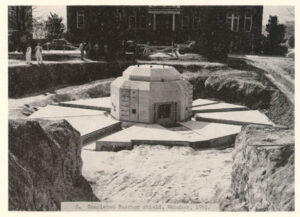
May 12, 1951: Excavation work is started at reactor site.
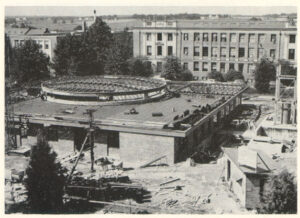
June 1951: Southeastern Construction Co. starts work on the reactor foundations.
December 1951: R-1 Shield completed.
January 1952: Wrenn-Wilson Construction Co. of Durham begins construction of reactor building.
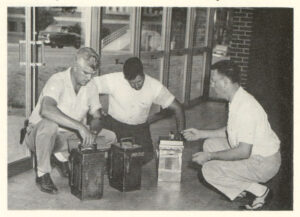
November 1952: Reactor Building completed – total cost of reactor and building is $630,000, including a $200 Thousand Dollar gift from the Burlington Mills Foundation.
September 3, 1953: First R-1 reactor fuel shipment arrives from Oak Ridge, TN.
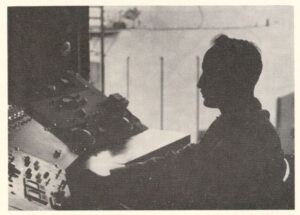
September 5, 1953 @ 12:59 AM – Initial criticality of R-1 Reactor.
June 1955: R-1 reactor is shutdown due to corrosion in reactor vessel and cooling coils. Total power generated was 60,000 kW-hrs.
R-2 Reactor:
R-2 Reactor specifications, elevation view & plan view.
- June 1955: Following the shutdown of the R-1 reactor, a new reactor vessel with a hemispherical bottom and safety envelope was constructed and inserted into the original R-1 shield. Like R-1, R-2 was a homogeneous uranyl sulphate fueled reactor.
- May 1957: Initial criticality of R-2. The maximum power level is 500 watts.
- December 1958: When the R-3 reactor design is conceived, the R-2 core is removed from the original bioshield, relocated to the Bureau of Mines Building on campus, and redesignated as reactor ‘R-4’.
R-3 Reactor:
R-3 Reactor specifications, elevation view & plan view.
- December 1958: Work is initiated to build a heterogeneous reactor utilizing MTR (Materials Test Reactor) plate-type fuel located in the modified R-1 shield structure. The shield structure is extended upward to accommodate a new water filled tank containing the reactor core. The reactor is moderated and cooled with light water, and surrounded with a graphite reflector.
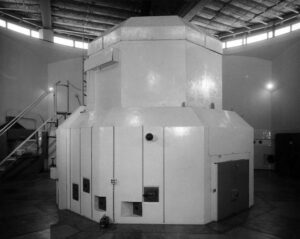
- 1960: Initial criticality of R-3. The maximum power level is 10 kilowatts.
- 1973: The R-3 reactor is shutdown.
- 1980: The R-3 reactor is decommissioned.
R-4 Reactor:
R-4 Reactor specifications & cutaway view.
- December 1958: The R-2 core is removed from Burlington Lab, relocated to the Bureau of Mines Building on campus, and redesignated as reactor ‘R-4’.
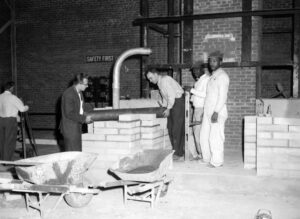
- April 1959: R-4 Reactor operational. The maximum power level is 100 watts.
- 1961: The R-4 reactor is shutdown.
PULSTAR Reactor:
PULSTAR Reactor specifications.
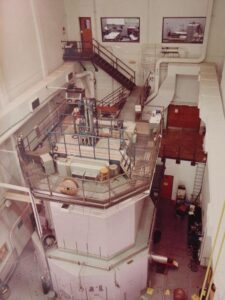
- June 1, 1969: Construction is started on the PULSTAR Reactor. The reactor is designed and built by American Machine and Foundry (AMF) Corp.
- 1972: PULSTAR Reactor construction completed with a total cost of ~$1.5 Million.
- September 9th, 1972 @ 1:52 AM: Initial Criticality of PULSTAR Reactor. Maximum licensed power is 1 Megawatt.
- As of August 12, 2010: Total power generated by PULSTAR is 29,610 MW-hrs.
Historical Pictures
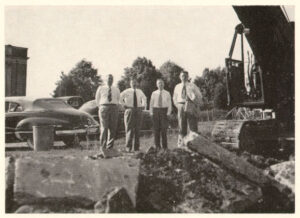
Early Nuclear Engineering Faculty at groundbreaking.
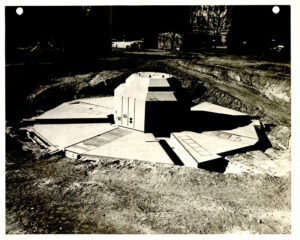
R-1: November 1951.
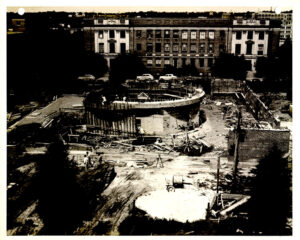
Burlington Lab – August 1952.
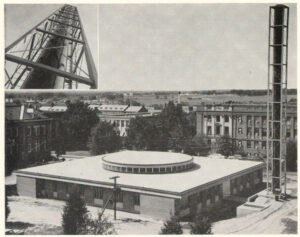
Burlington Lab – completed.
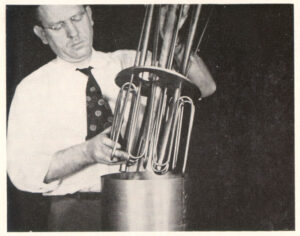
Dr. Clifford Beck with R-1 Reactor Vessel
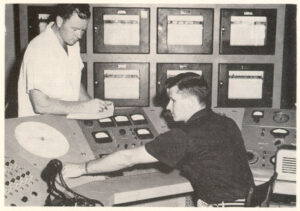
R-1 Control Room
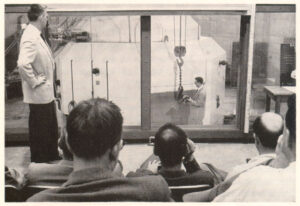
R-1 Observation Room
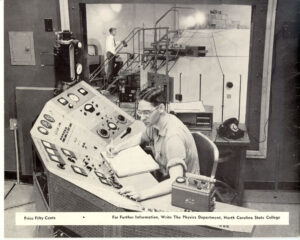
R-1 Postcard – Cost 50 cents
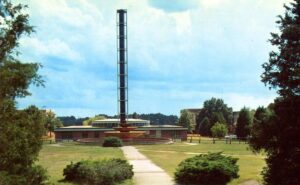
Burlington Lab – post card.
Additional historical information about nuclear reactors and engineering at NC State University:
- “The First Temple of the Atom”
- The First Temple of the Atom – supporting documents archive; Special Collections, NC State Library
- NC State University Library – historical reactor photo collections